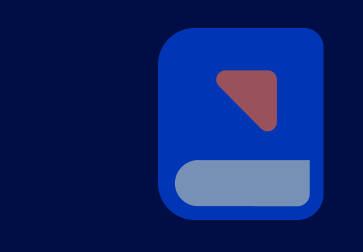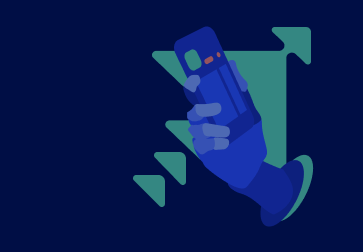In-app subscription optimization strategy for 2023: how to increase app revenue

If you spend a lot of money on attracting new users, but they do not end up buying subscriptions for your app, then you need to optimize your subscription funnel. Learn how to develop the best strategy to maximize your app subscriptions and increase app revenue.
I’m Alice Muir, a Senior Growth Consultant at Phiture. This article presents strategies for achieving successful subscription optimization in 2023 which will help generate revenue from your mobile apps. The strategies are based on insights shared during the “App Growth Trends & Strategies 2023” webinar that took place on February 2. You can access the webinar recording here.
Contents
1. Continue to provide value to users
2. Work on the lifecycle of your app subscriptions
3. Create value for users less likely to subscribe
4. Optimize paywall placement in your app
5. Think about longer trials for your app
5 steps to increase app revenue with subscriptions
1. Continue to provide value to users
According to Forbes, the US economy may soon be in recession. Subscription businesses should always strive to provide value to the user, whether we’re in the midst of a recession or not. As users are paying for the subscription on a recurring basis, we should always make sure to add value to their life and aim to make the product is a part of their everyday routine.
People can stop engaging with the product for various reasons. For example, a music or video streaming service stops producing content. Another reason could be that the user has had a change of lifestyle or habits, and the products no longer fulfill their needs.
The most important thing you can do to reduce a drop in subscriptions is to reinforce your value proposition and find new ways to provide value.
A good example is Headspace, which found a way to extend its value proposition. They knew they needed to try to retain users who had gone through the basic meditation pack and learned how to meditate.
These users don’t need the Headspace app to meditate anymore but might come to the app for other things. Headspace created Move Mode, which offered a way to use mindfulness when exercising.
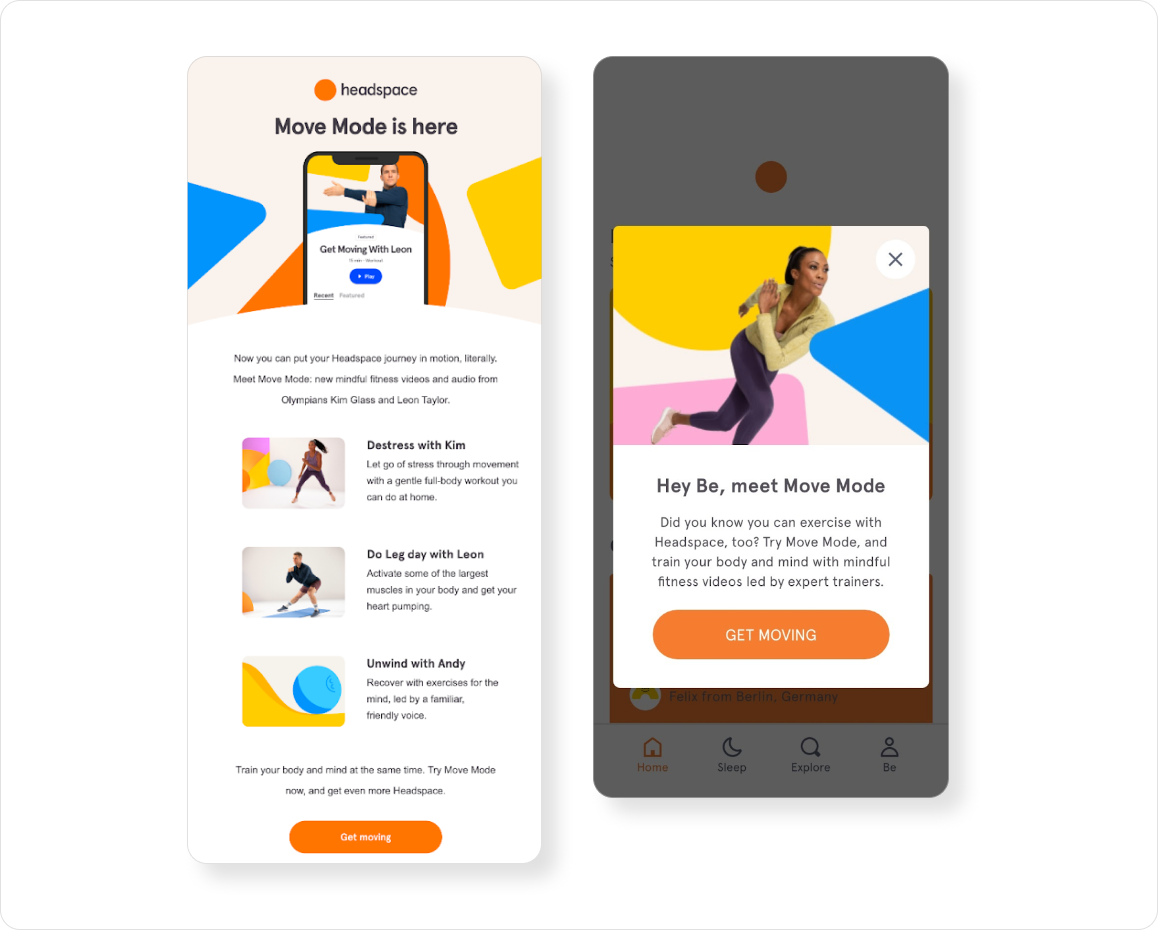
2. Work on the lifecycle of your app subscriptions
Good segmentation is essential as it highlights gaps in your subscription optimization strategy, particularly when you map your current initiatives against the different areas of the Subscription Lifecycle framework.
Here is the Subscription Lifecycle framework. It basically outlines the different stages of the subscription lifecycle to give you an idea of what you should be aiming to achieve at each stage.

This framework can be helpful in identifying the areas in your subscription process that you need to work on, or highlighting potential reasons why users are not sticking around.
The goal at the potential subscriber stage is to onboard, activate, and educate users about your core value proposition so that they see the value in becoming a paid subscriber and ultimately move into that subscribed and engaged bracket.
Subscribed and engaged users. It is really important to work on the activation of subscribed users who have a Premium subscription. They should understand how to gain premium value and find the features they are paying for.
The goal of the disengaged users’ stage is to understand why these users are no longer following your products the way that they used to and find strategies to win back your users’ attention, as Headspace did with their Move Mode feature.
Churned subscribers. Once you’ve done your research at the disengaged stage, you will be able to also win back some subscribers using discounts and promotions.
3. Create value for users less likely to subscribe
Another thing you can do to expand your value offering is to analyze “pre-potential subscribers”. “Pre-potential subscribers” need your app and like it, but for some reason, they haven’t figured out how to make the most of it and subscribe. For example, they might have less disposible income or simply need the premium features less.
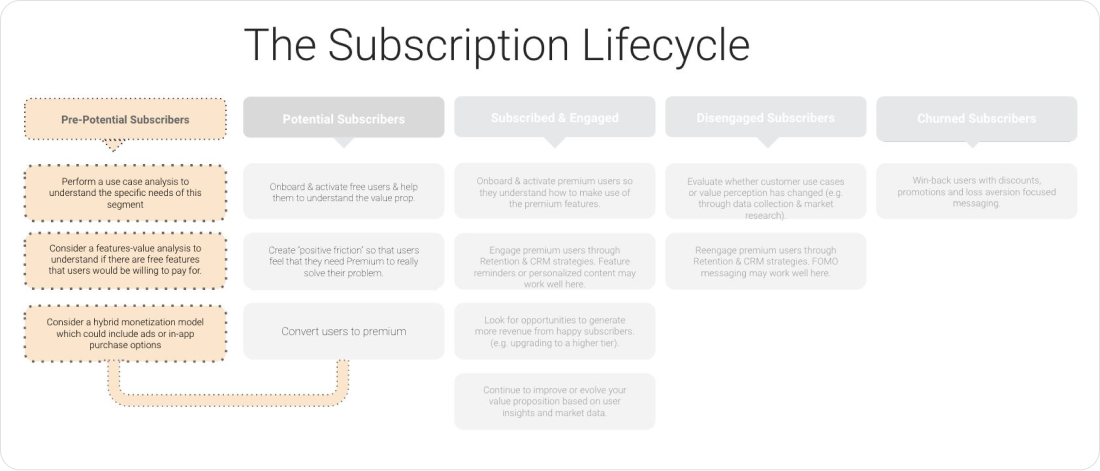
The first step to really understanding these users is to run a cohort analysis and see how their behavior and preferences differ from users who have subscribed. With these insights, you can develop a strategy to enhance the perceived value of premium products for these users.
The pre-potential lifecycle segment sits adjacent to the subscription lifecycle framework because, unless you can find some way to directly or indirectly monetize them, these are users may not be ideal for your funnel.
You can derive value from these people using several steps:
Firstly, consider why they are in the pre-potential bucket. Does the free experience solve their problem and they have no need to upgrade? Do they add value to the platform in terms of referrals or contributing to the network effect?
If it’s the latter, find new ways to monetize these users with a hybrid monetization model. For example, showing ads or considering enabling in-app purchases for some features that they may have a one-time use for. Duolingo is a great example of an app that uses a hybrid monetization model.
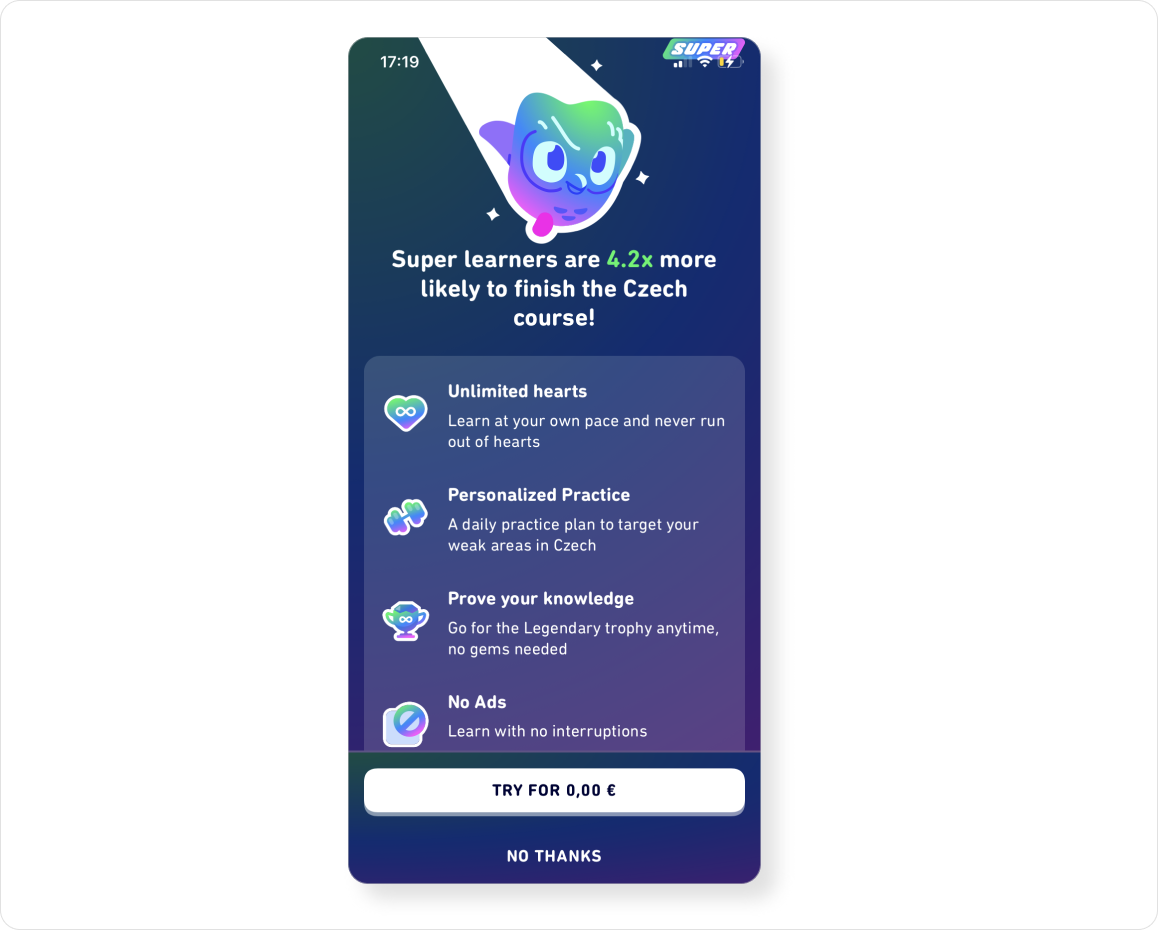

(rather than a full subscription)
If it’s the former, you might want to consider ways in which you can add additional “strategic friction” to your product so that users who are gaining considerable value from the free experience have the incentive to upgrade. This could look like a paywall that triggers when someone wants to save data or complete a project on a utility or health app, for example.
Make sure to analyze their uses to understand if they differ from those in the potential subscriber bucket. For example, with some dating apps, the value of the paid experience is normally skewed toward male users, rather than female users.
If you’re not already using a free trial model, you could consider using a trial for this particular segment, as an extra push to convert. But be careful not to roll this out to all users if your CVR for potential subscribers is already good. You could unlock a free trial for these users in particular, rather than a blanket approach which could cannibalize existing conversion potential. Micro trials may also be effective if there’s one particular feature the user is showing an interest in.
Some products, such as Headspace, have taken the hard paywall route which involves removing the free experience completely. You need to have a high volume of users to make this approach viable.
This could mean adding extra features as part of your premium subscription offering or doing other things to monetize those “pre-potential subscribers”.
4. Optimize paywall placement in your app
You should optimize your paywall placement to maximize your conversion potential. In the chart below you can see some examples of placements that you might want to test.

The big and obvious one is onboarding. If you can get your payroll close to the beginning of onboarding, you will have almost 100% visibility for the new users.
But there are also other flows that you can use to personalize the user experience. A “Happy moment” in the user lifecycle is when somebody has completed an action, and really understands the value proposition of the product, and they’re starting to adopt a habit around it. For example, if we go back to Headspace, this could be somebody that has completed the basic meditation pack and really understands what they’re doing and why they need this app.
Friction points trigger a paywall once a user has gotten a lot out of the free experience, and they can complete the action to get some extra value. A great example of a friction point is Adobe Express. You can edit on Adobe Express for free, but if you want to actually download and save your project, you have to buy a subscription.
Indirect intent: this is any behavior that indicates that there may be an intention to subscribe, without directly interacting with premium features or clicking paywall CTAs. For example, the user’s engagement behavior may replicate that of high-converting users.
Direct intent: when a user directly engages with premium features, locked content, or triggers steps in the conversion funnel before dropping out. Often when the user shows direct intent to subscribe but continues to drop out of the conversion funnel, it’s because the price is too high for this particular user. Winback discounts can be an effective strategy here.
So you should be looking at how to retarget these users. For example, we may use reverse trials. The first person who started to consistently talk about reverse trials in the industry was a Product Growth Expert called Elena Verna. She has discussed ways in which reverse trials can be a great tactic to basically give users a chance to experience the core value of premium but without that extra commitment at the beginning.
You download or start using the products, and automatically, you have access to those premium features without subscribing and entering credit card details. Then after a certain period, those premium features get rolled back. And if you want to continue using the premium, then the user should buy the subscription.
Test different variants of paywall placement to maximize your app subscriptions and increase app revenue.
5. Think about longer trials for your app
RevenueCat analyzed over 10,000 subscription apps and found out that the longer the free trial is, the more chance it will lead to a paid subscription.
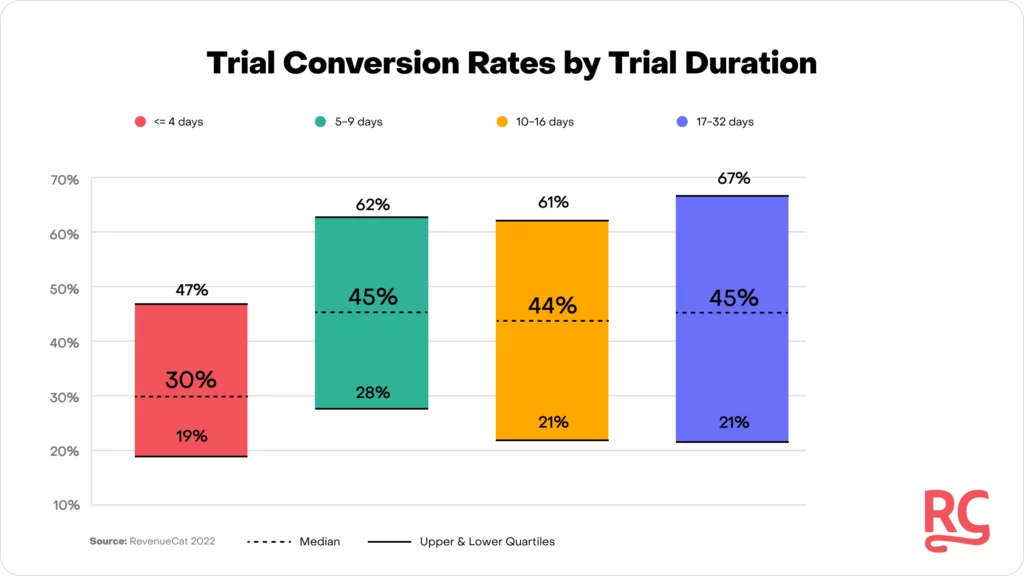
Think about the context. For example, you have a product that people usually use once a month. Then they’re probably going to use that product for about maybe 2–3 months before they really form a habit around it.
This is why a longer free trial is probably necessary for users to form habits on your app. So that’s why I would recommend test different trial lengths. You should choose the trial length based on the features of your product and user behavior.
5 steps to increase app revenue with subscriptions
1. Provide extra value for users who don’t need the basic functions of your product anymore.
2. Work individually with every user segment.
3. Strategize subscriptions that will be valuable for adjacent users.
4. Use different paywall placements depending on the lifecycle.
5. Try a longer trial if users don’t have enough time to use your app’s features.
We hope that the tactics from this article have shown you how to generate app revenue with subscription optimization. Read our article on how to increase app installs and subscriptions.
Subscribe to our newsletter to get monthly digests and articles on ASO, app promotion, and working with reviews.





